What is a product recommendation engine? (Uses and top 3 options)
If you’ve ever bought a product from Amazon or watched a movie on Netflix, you’ve experienced the power of product recommendation engines. These filtering systems, powered by machine learning and artificial intelligence (AI), work behind the scenes to deliver relevant recommendations to each user.
Updated on 7 Jan 2025
Recommendation systems are common today, especially on eCommerce sites. The reason for that is simple — they’re extremely powerful for increasing customer engagement, conversions, revenue, average order value (AOV), and other key metrics.
At Insider, we’ve seen the impact of relevant product recommendations first-hand. For example:
- Philips used our AI-powered product recommendations to boost their conversion rates by 40% and generate over €20,000 of incremental revenue.
- AVON used our personalization suite (including our product recommendation engine) to boost their website conversions by up to 78%.
- Samsung used interest-clustered product recommendations to achieve a 275% increase in conversions and a 10% uplift in conversion rates.
In this guide, you’ll learn exactly how product recommendation engines work and how they can benefit your business.
We’ll explore the different types of recommendation systems and show real-life examples of their applications. Lastly, we’ll review the three best recommendation systems, starting with Insider — our industry-leading personalization engine and cross-channel marketing platform.
Insider can help you deliver personalized product recommendations across every touchpoint customers have with your brand. To learn more, visit our website or schedule a demo with our team.
What are product recommendations, and how do they work?
Product recommendation engines are systems that analyze different types of data — like product information, behavioral data, purchase histories, and more — to deliver relevant product recommendations to each individual customer.
From a data science perspective, these engines use three broad types of filtering methods:
- Collaborative filtering, where data from many similar users predicts what products an individual customer will find interesting. This method requires a lot of data to work well, so it’s typically used by large brands with big datasets that the engine can analyze.
- Content-based filtering, where the system creates unique profiles for each customer based on their preferences, interests, and past behaviors. This lets the engine deliver unique product suggestions to each individual customer, without taking into account what other users are doing.
- Hybrid recommendation systems, where systems are composed of different aspects of collaborative and content-based approaches. By using data from different users and information about the individual customer, these systems can sometimes yield the best results out of all three types.
If you’re a marketer or eCommerce manager using a product recommendation engine, you probably won’t work with these three categories. For example, if you’re using Insider’s AI-powered product recommendation tool, you can choose between various recommendation strategies, including:
- User-based, recently viewed, and purchased with last purchased, all of which rely on product and user data to automatically deliver personalized product recommendations to each individual user.
- Cookie-free based, which relies only on product data to deliver different types of recommendations, like trending products, highest discounted products, new product arrivals, frequently purchased together, and more.
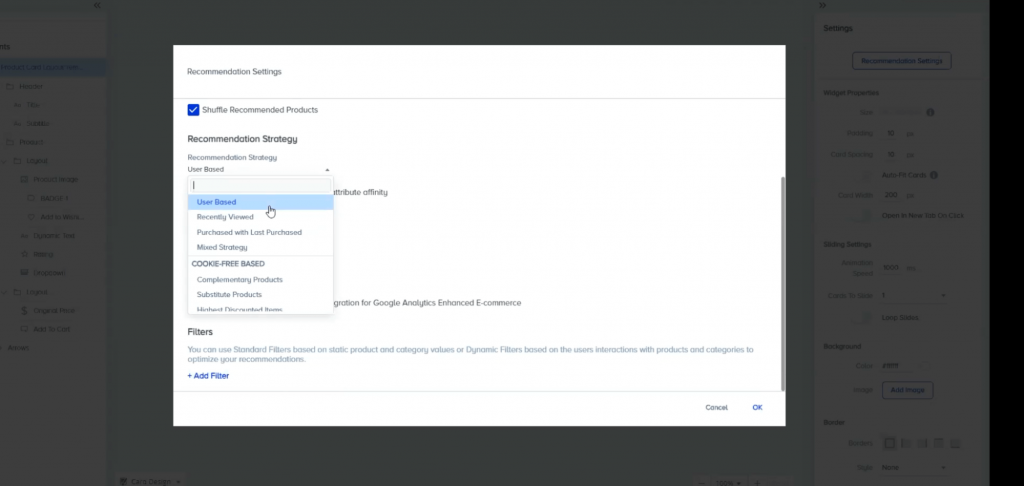
The names of these strategies are much more intuitive to understand than collaborative or content-based filtering (again, these are used in a more technical context).
You can also easily choose where you want product recommendations to appear. For example, you may want to show your highest discounted products only to all users on the homepage. At the same time, you can also show unique recommendations to every user once they reach their shopping cart page or a product page.
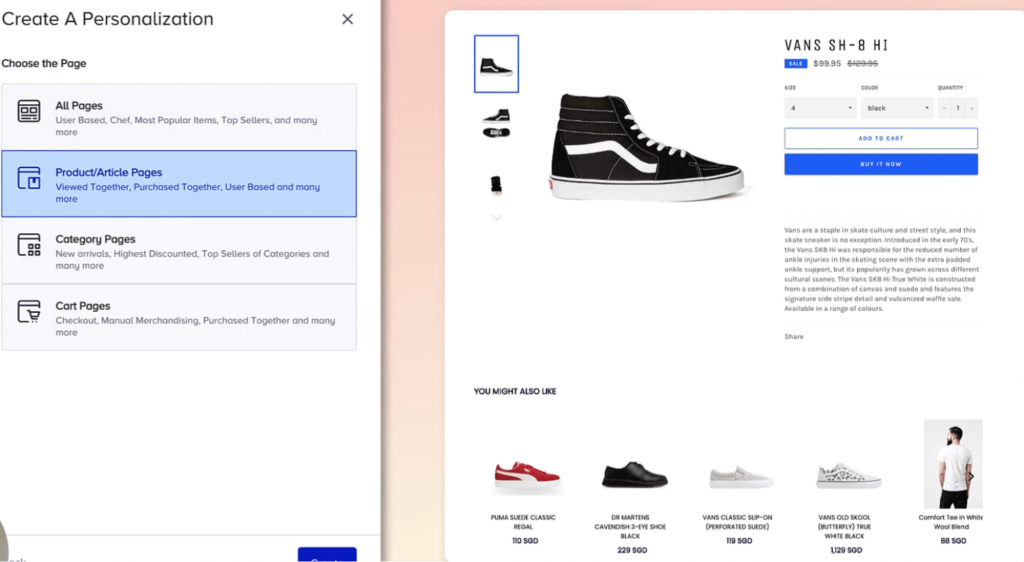
Lastly, Insider can apply different types of product recommendation algorithms within a campaign. Our platform will then analyze which ones produce the best results and automatically apply only them to the specific customer (or group of customers).
Use cases and benefits of product recommendation engines
Product recommendation engines are widely used on eCommerce websites and mobile apps. They’re essential for online stores with massive product catalogs where customers can easily get overwhelmed by the number of options and leave.
A good recommendation engine ensures your customers always see relevant products. It also lets you manually choose which products are shown on different site pages and highlight different attributes (e.g., reviews or discounts).
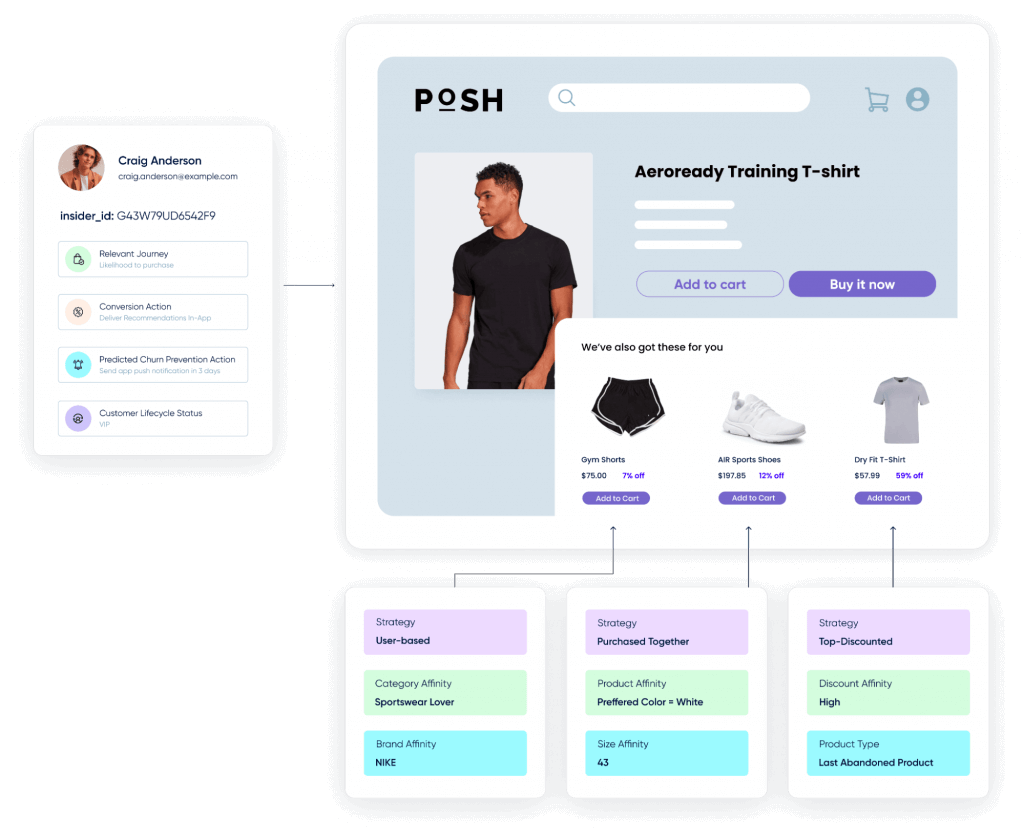
This has a few essential benefits for most businesses:
- Higher customer satisfaction and engagement. Personalized product recommendations make customers feel your website or app is built specially for them. This makes them more likely to stay longer, see additional products, and be happier with the overall user experience.
- Higher conversion rates and marketing budget maximization. The more relevant your product recommendations are, the more website visitors will become paying customers. This is crucial for making the most out of your marketing dollars on getting people to your site.
- Higher revenue, AOV, and LTV. These key metrics improve as a direct result of the previous two benefits. You can check out our case study with Dover Saddlery to see how personalized product recommendations can drive over $2 million in incremental revenue and a 29x return on investment (ROI).
However, websites and mobile apps aren’t the only places where you can show personalized product recommendations. Some product recommendation engines allow you to expand your personalized recommendations to channels like email, push notifications, SMS, and WhatsApp.
For example, with Insider, you can:
- Provide different types of product recommendations directly in emails.
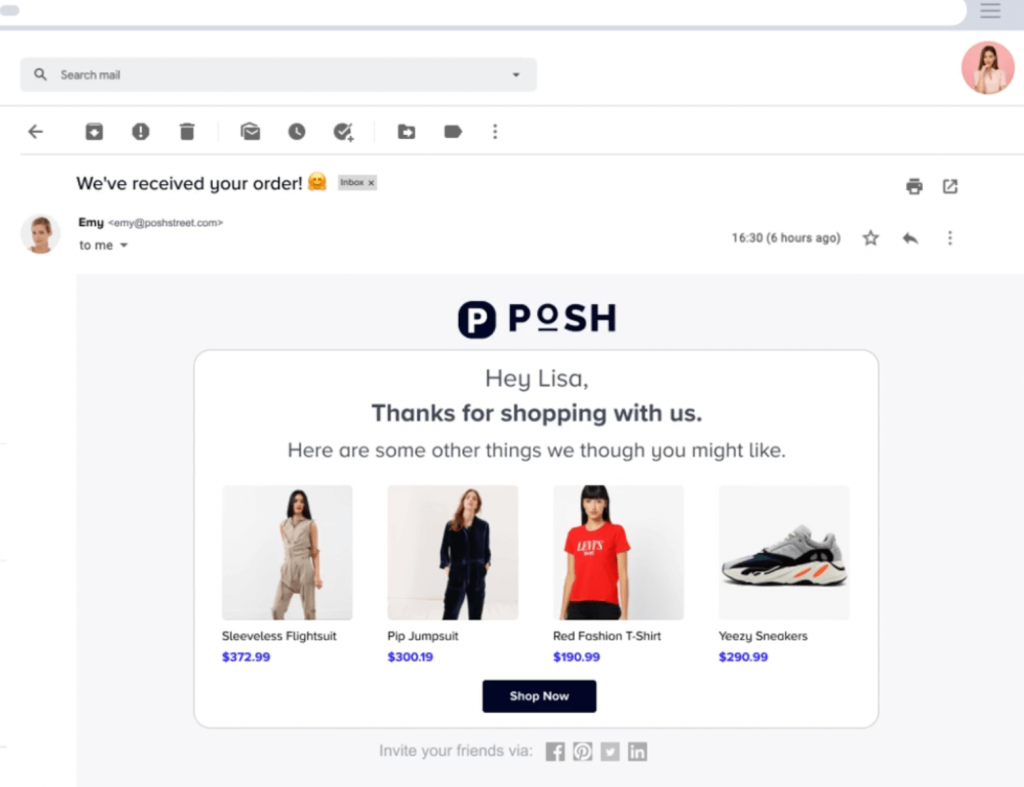
- Reduce cart abandonments by sending out web push notifications to customers with their products shortly after they exit your site.
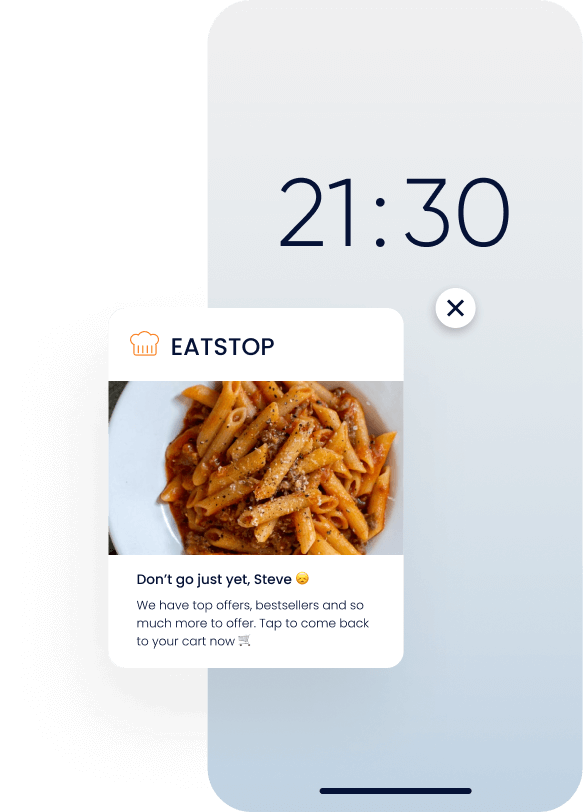
- Improve customer lifetime value (CLTV) by showing customers product recommendations that are related to their previous purchases.
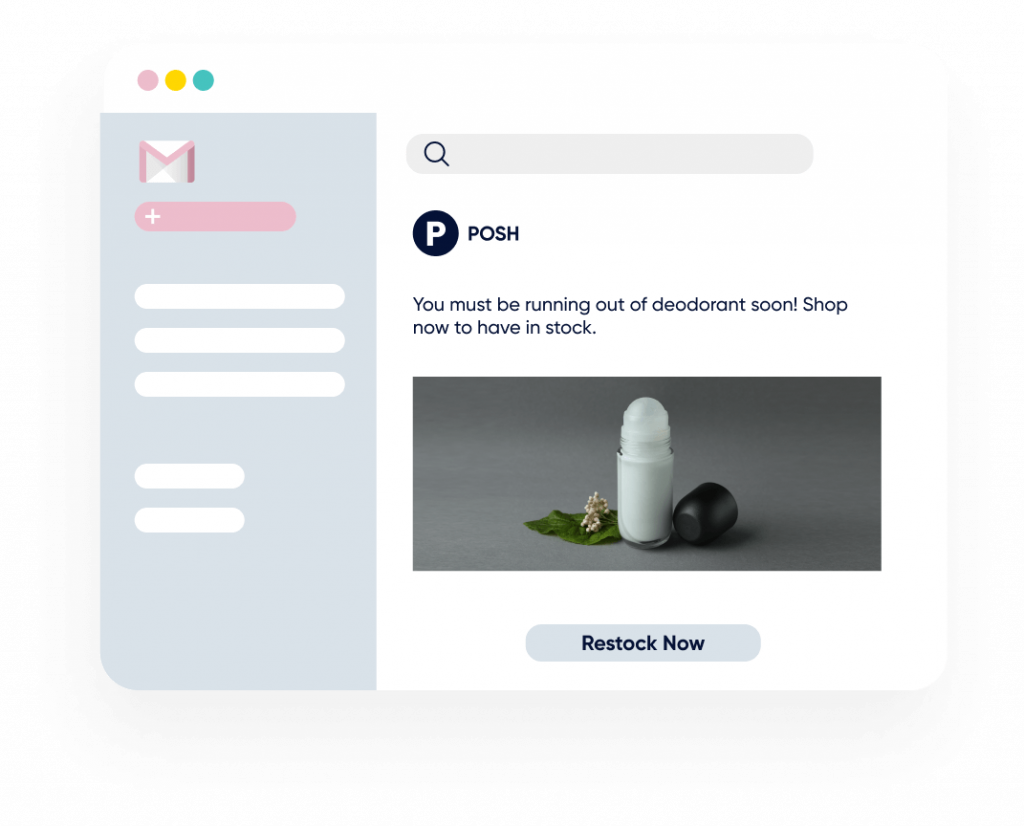
- Prevent churn by targeting customers who’ve stopped visiting your site or app with personalized SMS messages, push notifications, or WhatsApp offers.
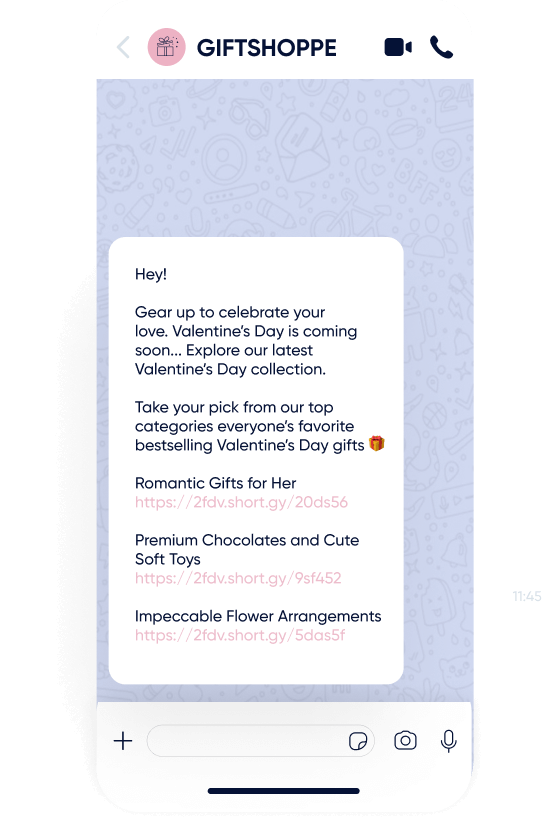
Extending your personalized product recommendations across messaging channels also has the added benefit of creating a consistent customer experience across all touchpoints with your brand.
If you’re interested in this approach, check out these 6 strategies for increasing revenue with cross-channel product recommendations.
The 3 best product recommendation engines for driving conversions, revenue, and AOV
Now that you know how product recommendations work, we’ll dive into the three top options on the market today. All three can help you deliver personalized recommendations across at least your website and email communications.
Insider
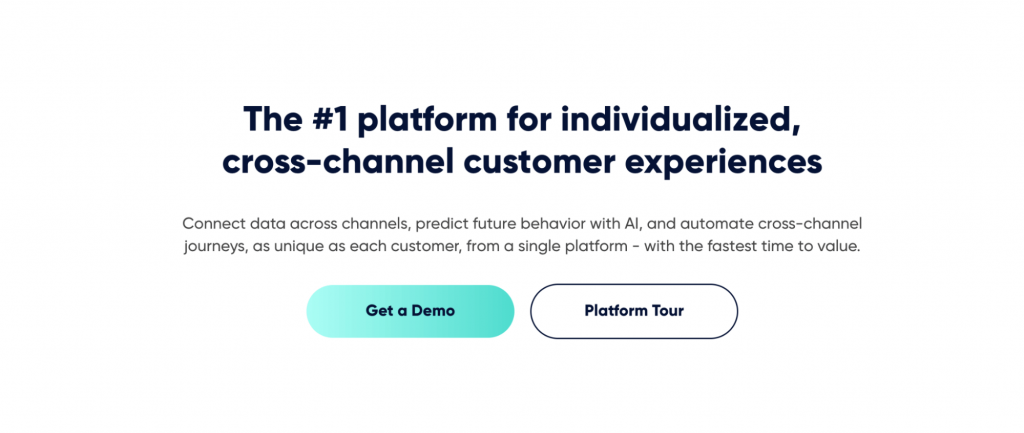
Insider brings together the most extensive set of personalization capabilities for websites and mobile apps and channels like email, SMS, WhatsApp, push notifications, and more.
As we showed earlier, you can use our platform to deliver highly relevant product recommendations across different site pages by choosing from various strategies.
Thanks to its broad channel support, Insider can also help you reduce acquisition costs, boost conversion rates, and increase revenue by personalizing every touchpoint in their customers’ experience.
Additionally, Insider has extensive data aggregation, automation, and engagement functionalities that enable you to:
- Build, automate, and personalize cross-channel marketing campaigns.
- Consolidate your customer data and get a 360-degree view of each customer.
- Reach the right audiences with the right messages on the right channels at the right time.
- And much more.
Our solution has been ranked as the best and easiest to use personalization engine by G2.
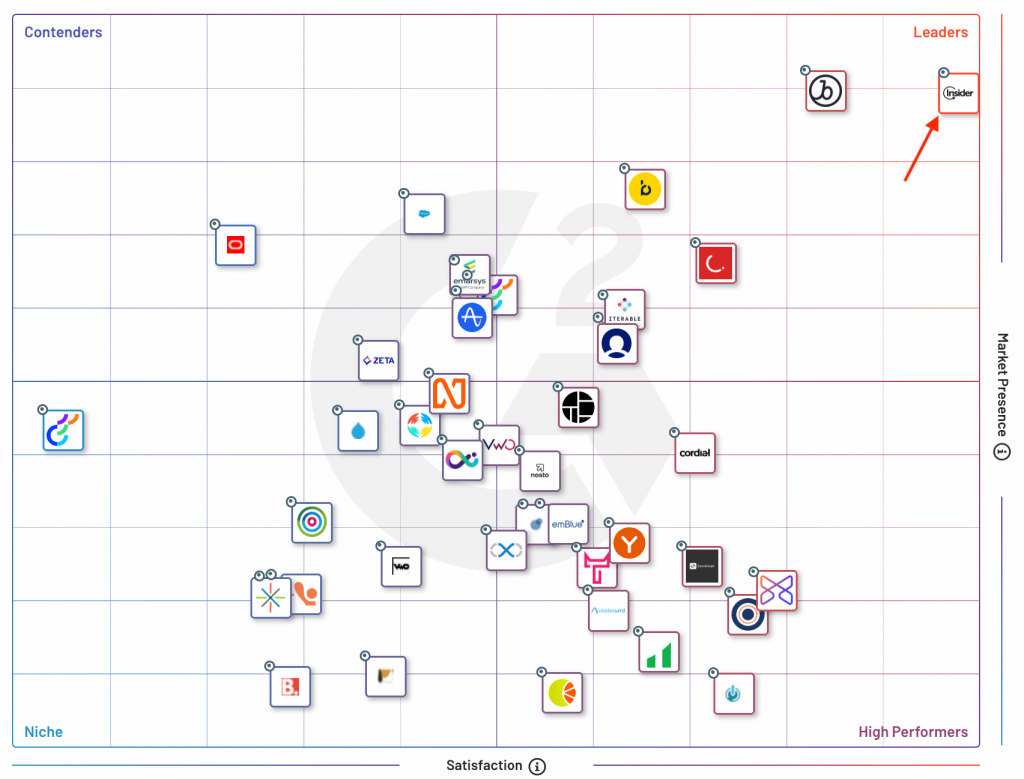
As a multi-faceted platform for mid-sized and enterprise companies, Insider also ranks at the top of other key categories like:
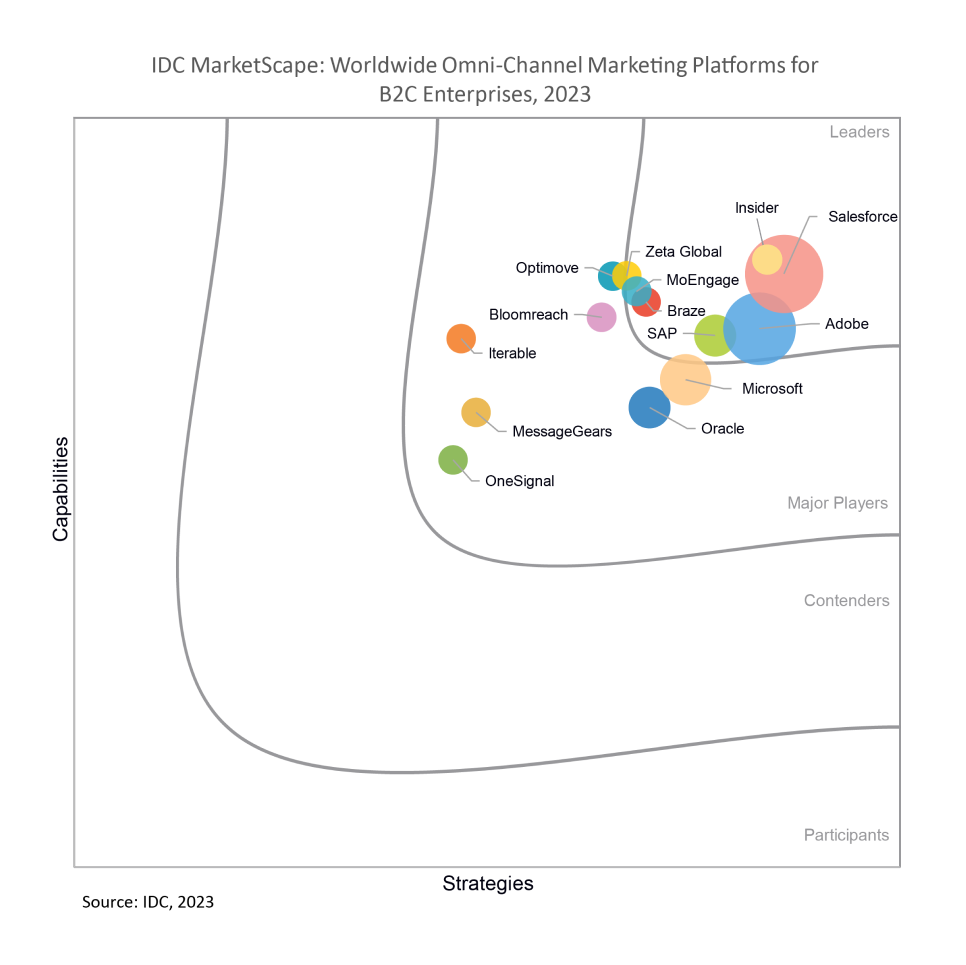
In the next sections, we’ll explore how Insider lets you deliver tailored product recommendations using various recommendation strategies and a simple drag-and-drop editor.
Easily build, deploy, and analyze product recommendation strategies
Providing relevant product recommendations across your website with Insider is simple.
First, select which page (or pages) you want to show the recommendations on. Then, you can choose from various settings to adjust the campaign to your needs.
For example, you can instruct Insider to show a certain number of products or hide the recommendation altogether if the algorithms can’t come up with more than a certain number.
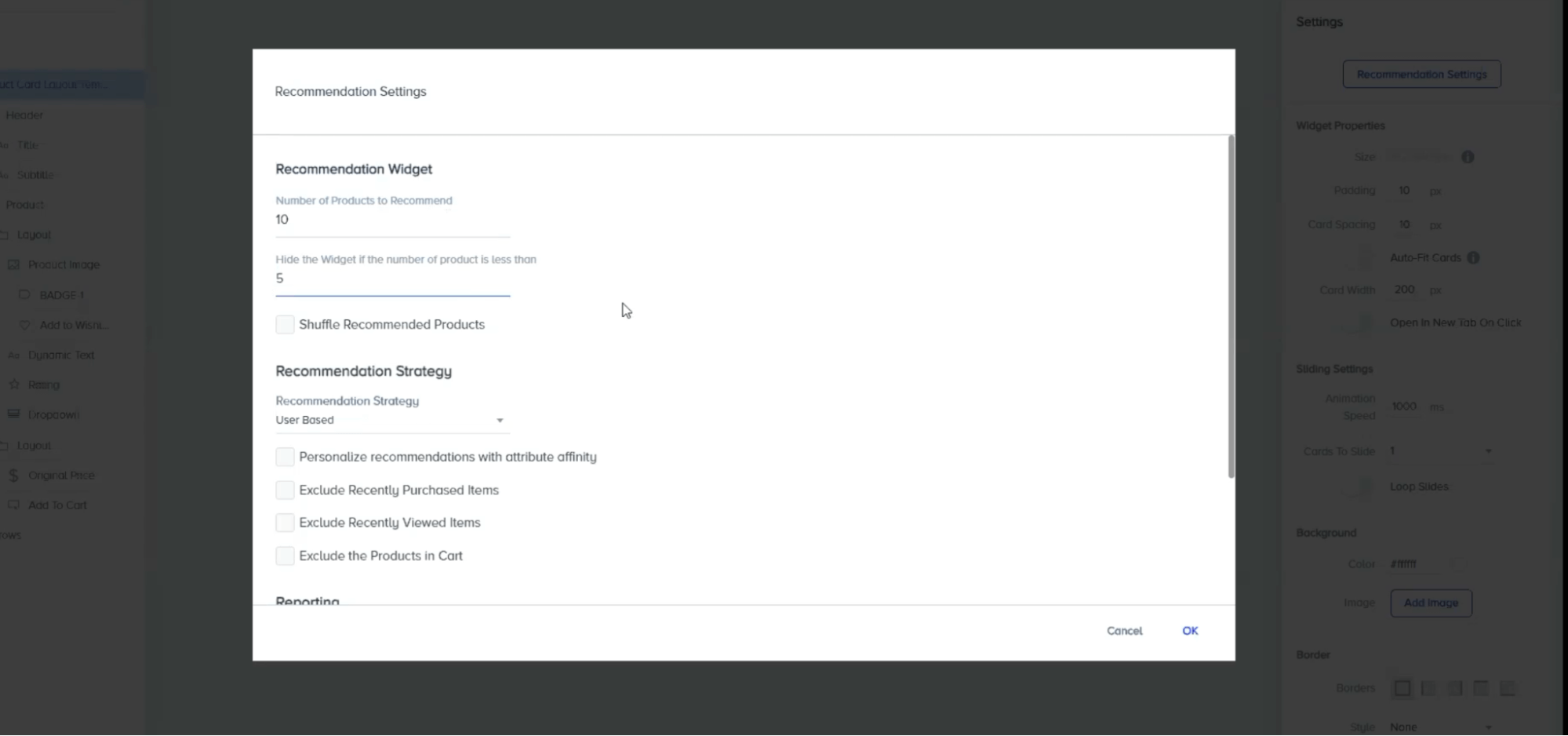
You can also easily exclude certain products from appearing in the recommendations. This is useful in lots of scenarios, including:
- When you don’t want to show users products they’ve recently bought.
- When you don’t want to recommend products that won’t be in stock over the next few months.
- When you don’t want a certain product to be included in the recommendation because people are buying it in droves anyway.
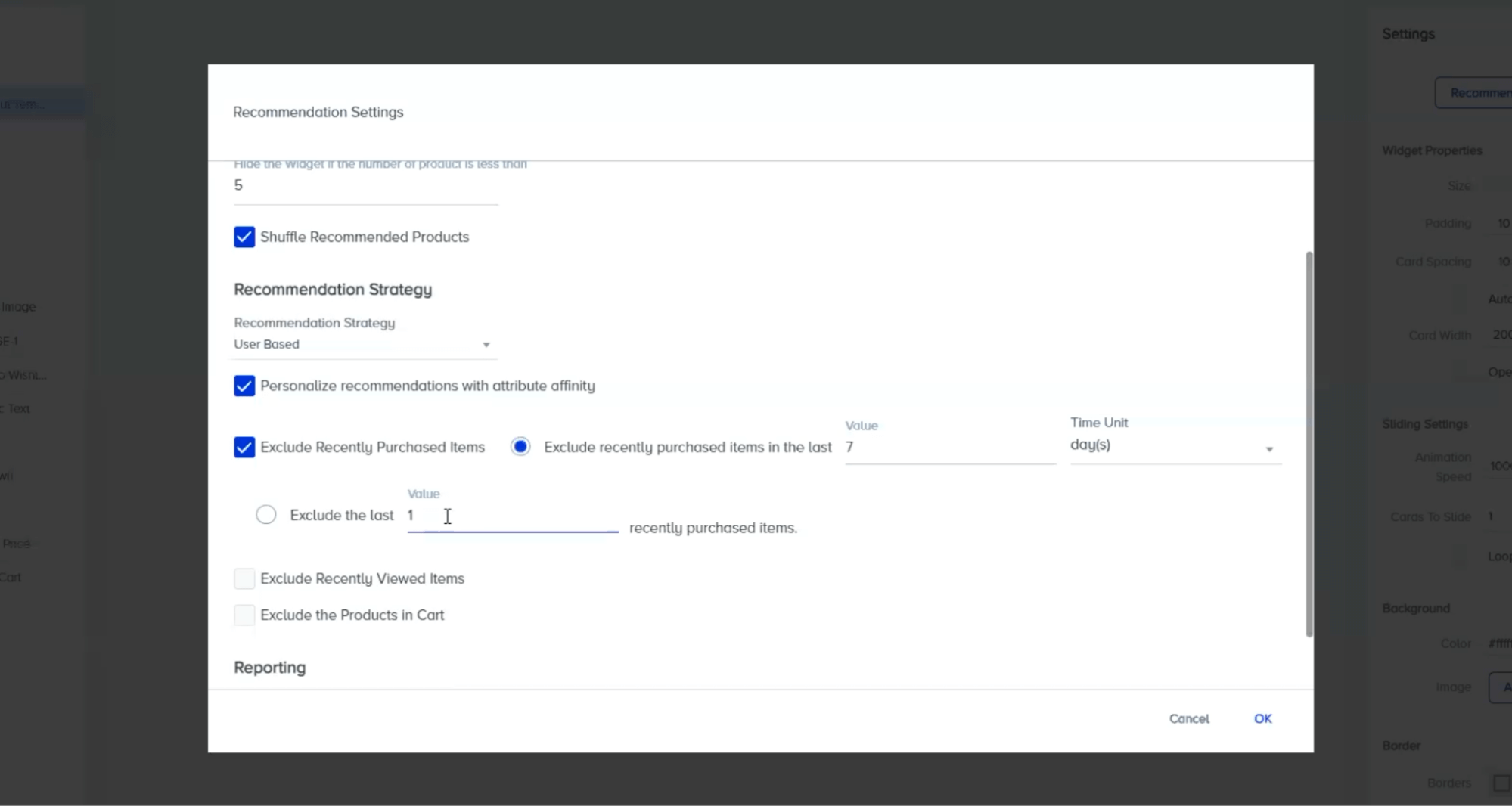
As we showed earlier, you can also choose from various user-based and cookie-free recommendation strategies. These include:
- Generic algorithms, like most popular items, best-sellers, highest discounted products, new arrivals, trending products, and most valuable products.
- Contextual filtering, like viewed together, recently viewed, purchased together, location-based top sellers, checkout recommendation, purchased with last purchased, and more.
- Collaborative filtering, where product recommendations are based on behavioral patterns of similar users. This is done by taking into account product visits, purchases, and added-to-carts.
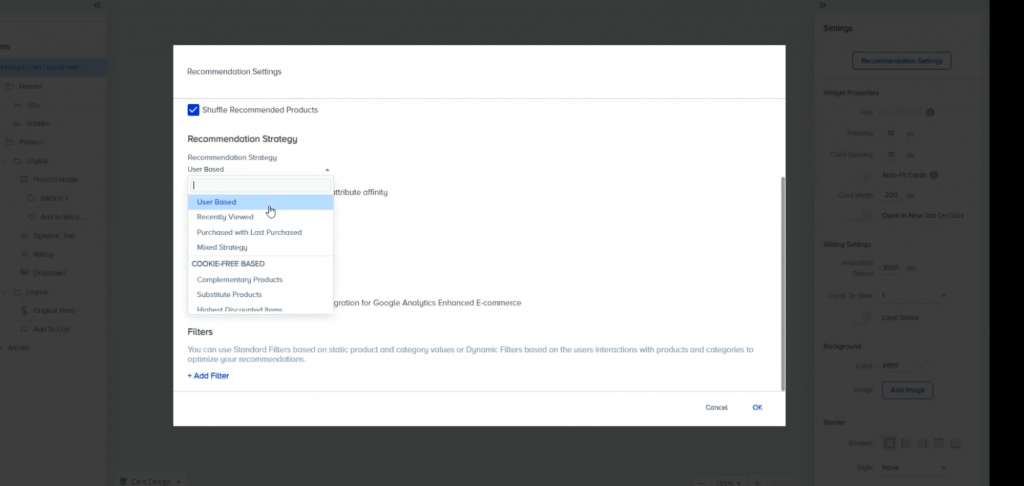
You even have a manual merchandising option to choose every item in the recommendation widget (e.g., if you want to sell items expiring quickly).
You can also apply a mixed strategy where you manually combine different types of algorithms. This is a great way to find out which combination of strategies works best for your business.
Plus, Insider’s Chef — an automated recommendation algorithm — can automatically detect the best combination by testing the most popular items, top sellers, user-based, highest discounted, new arrivals, and trending items algorithms for better conversion rates. That way, you don’t have to choose algorithms by hand (like in a mixed strategy). Instead, our platform can do the heavy lifting of testing and evaluating the performance of different algorithms.
Insider also has an intuitive drag-and-drop editor to tailor your product recommendations further.
For example, the screenshot below shows the editor in action. You can easily adjust the title, subtitle, individual products, and properties like spacing, size, padding, and much more.
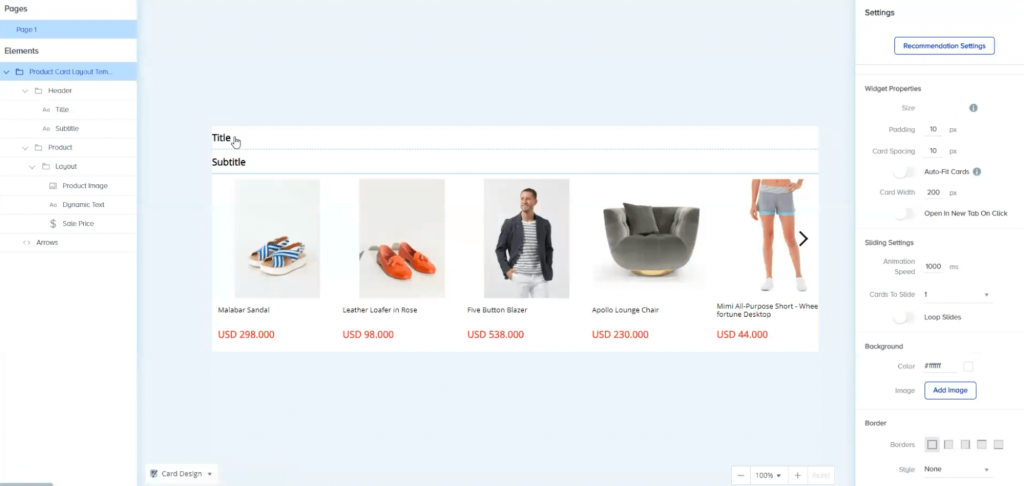
You can even dive into individual products and highlight different aspects, like their reviews or prices, before and after a discount.
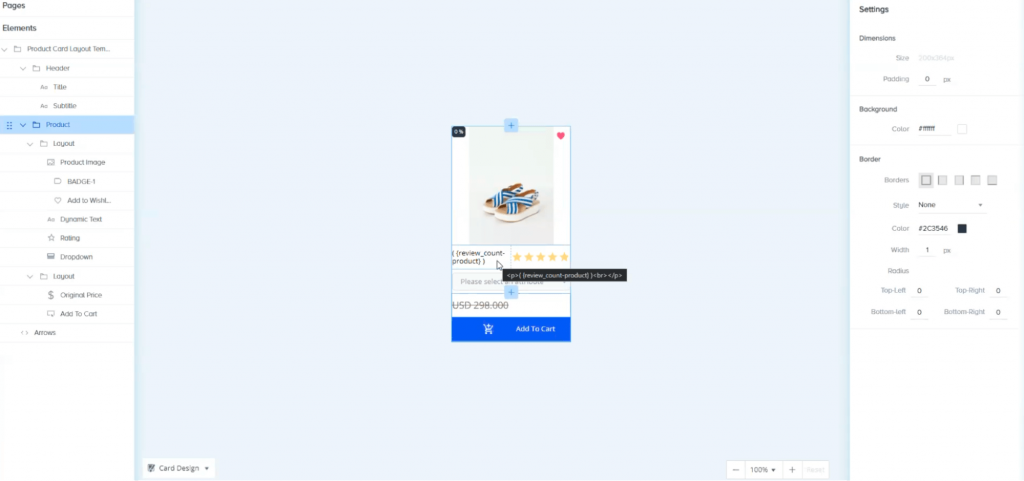
Put simply, you’re in full control of the products that appear in your recommendations. At the same time, our algorithms can still do all of the heavy lifting of matching individual users with the most relevant products for them.
Finally, Insider also has a dedicated analytics panel for product recommendation campaigns.
You can use it to see which recommendation strategies are performing well and which aren’t (and why). That way, you can continuously test and improve your results using a data-driven approach instead of blindly guessing why certain recommendations aren’t working.
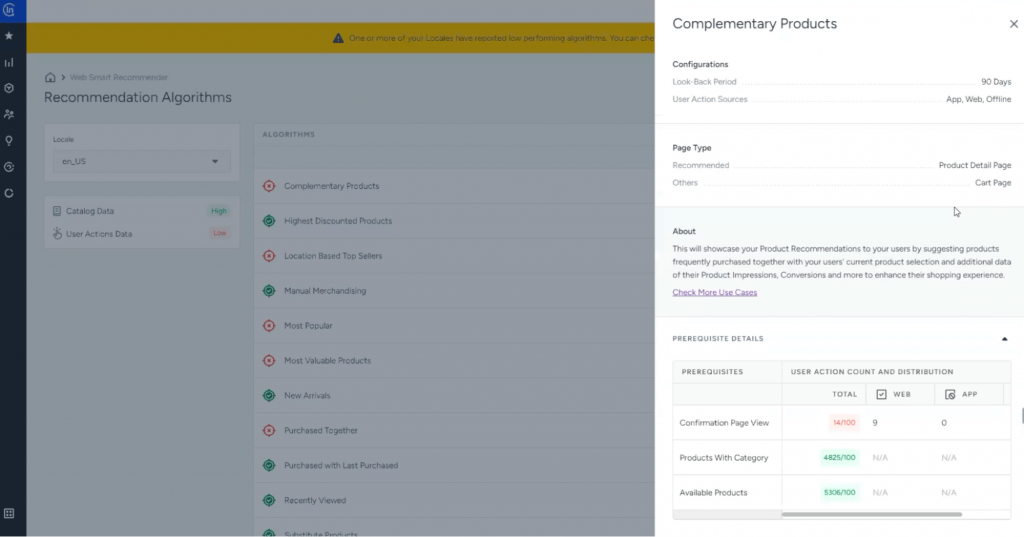
Start as quickly as possible and work with an experienced support team
The most difficult part of delivering relevant product recommendations at scale is getting started. The process can take months before you see meaningful ROI between the implementation, integrating your product catalog, and testing different strategies.
At Insider, we aim to speed this up as much as possible, which is why clients rate us as the best solution in terms of ease of setup, ease of use, quality of support, and time to value.
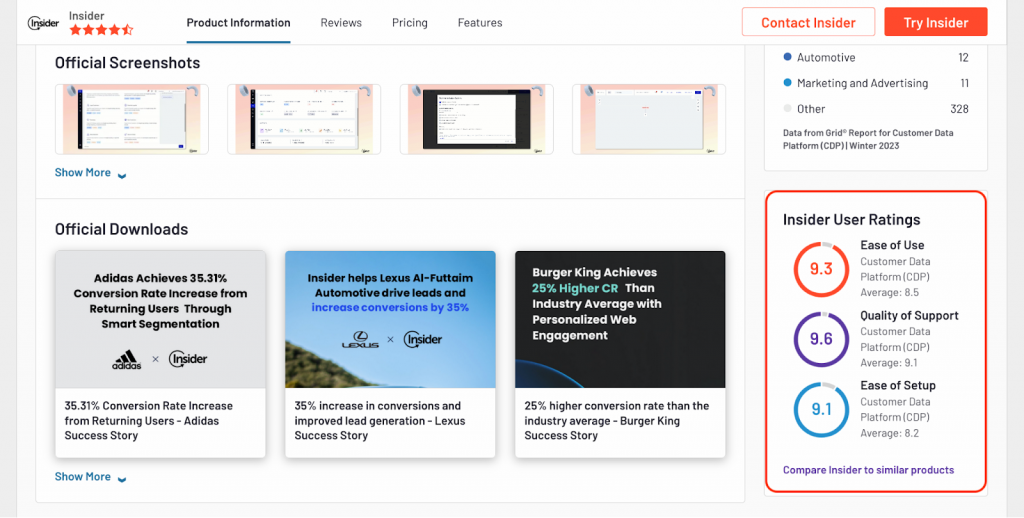
Unlike many marketing clouds and enterprise marketing platforms, Insider offers plenty of flexible setup and integration options. For example, if you have an eCommerce store, you can:
- Use Insider’s website tag to crawl through your site and create a product catalog. This is a great option if you want to get started fast, with minimal effort.
- Upload your product catalog as a CSV and XML file or feed the data through an API. While more time-consuming, these methods give you control over every piece of data in your catalog. You can also combine both options by starting with the website crawl and then submitting a catalog down the line.
We also offer a dedicated catalog manager tool where you can see all products included in your catalog and search and filter them by specific criteria. If you click on a specific product, you’ll also see details like its upload and last update date, its attributes, its URL on your site, and much more.
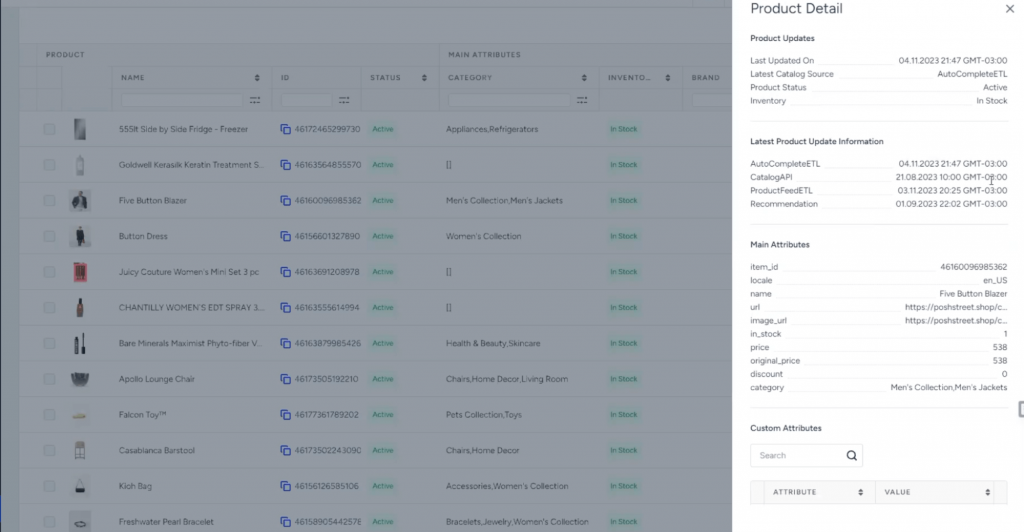
Additionally, our experienced support team will speed up the time to value even more by:
- Helping you set up Insider with no extra setup charge.
- Showing you how Insider’s key features work and how to take advantage of them.
- Give you ideas for implementing marketing, personalization, and recommendation strategies that can generate quick results, based on your current analytics data.
Lots of customers highlight our support team as the biggest reason for getting started and seeing value from Insider incredibly fast:
“Their customer support has been nothing but a delight to assist us in every step of the way. They’ve made the complete experience amazing!”
Scale personalization efforts across all touchpoints
While Insider is fantastic for delivering personalized product recommendations, it’s also one of the best solutions for end-to-end website personalization. You can use it to deliver relevant content, messaging, and recommendations to each individual customer.
For example, you can use EUREKA to provide personalized site search results to all website visitors.
This tool proactively recommends products in real-time based on users’ preferences, browsing histories, or market trends. It powers the search functionality of websites to help people find what they’re looking for in the shortest possible time, which leads to lower bounce rates, higher conversions, and more revenue.
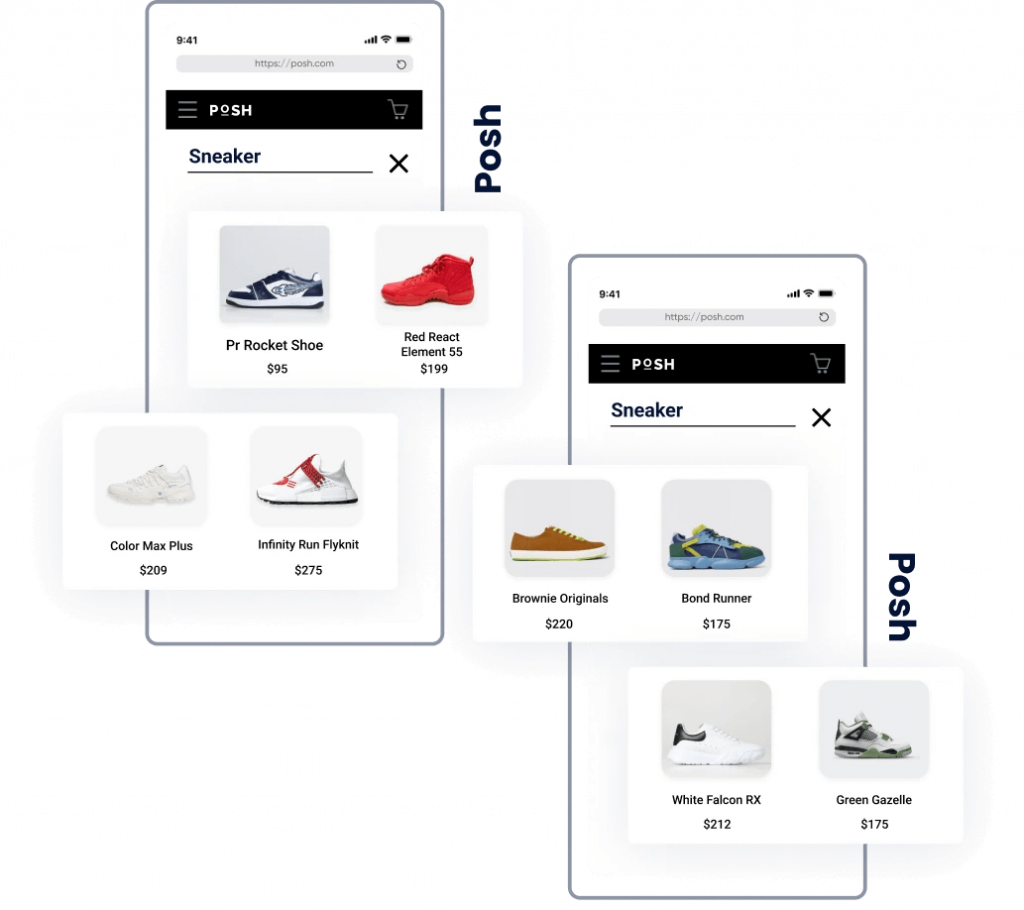
You can also use InStory to add engaging, Instagram-like stories to your mobile website.These stories consist of a title and thumbnail that grab users’ attention. When clicked, they expand to show a relevant product with a description and a call to action. This makes them a powerful way to drive product discovery, optimize conversion rates, and generate extra sales.
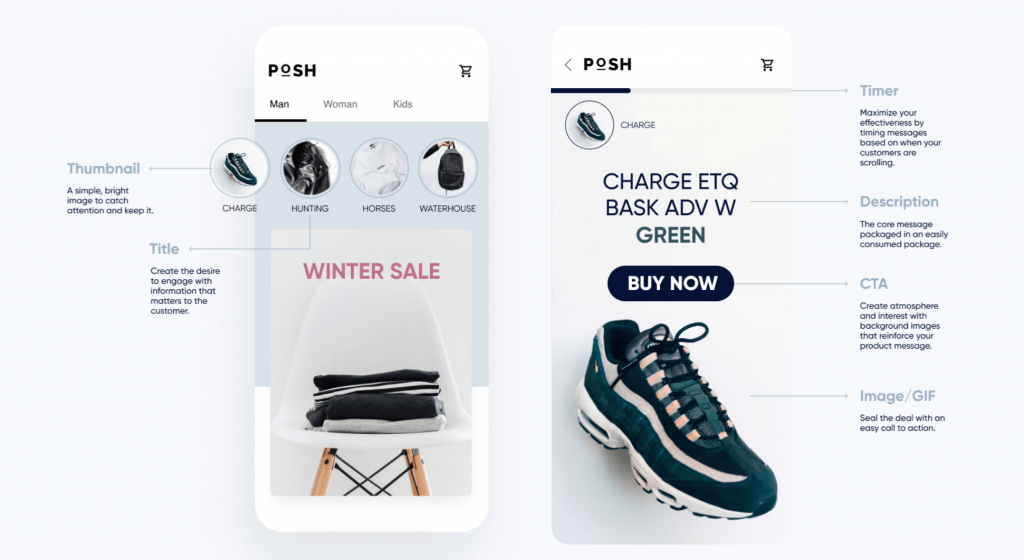
From here, you can also scale your product recommendations and run cross-sell and upsell campaigns across a variety of channels, including:
- Email and SMS.
- Push notifications.
- WhatsApp and Facebook Messenger.
- Chatbots, social media, search ads, and many more.
For example, NA-KD, one of Europe’s fastest-growing fashion brands, used an omnichannel strategy to deliver accurate recommendations across their website, mobile app, email, SMS, and push notifications. This resulted in a CLTV increase of 25% and a 72x ROI in 12 months.
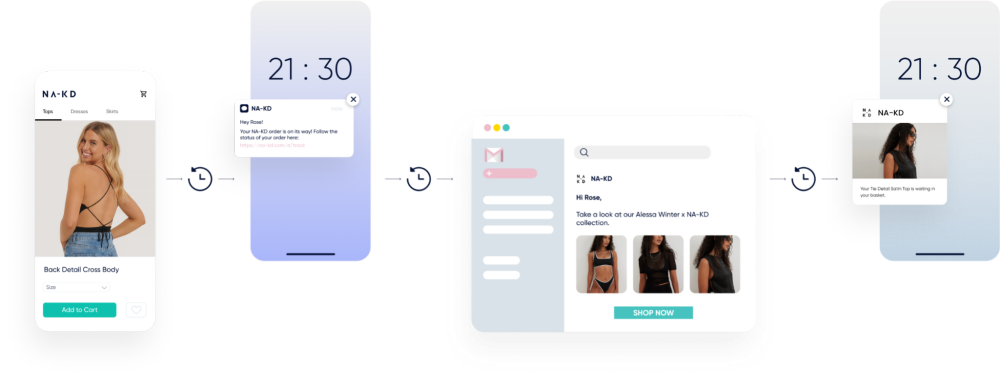
If you’re interested, we explore Insider’s functionalities for these channels in our guides:
- eCommerce marketing automation.
- Omnichannel marketing automation.
- Using our customer journey builder to boost revenue.
Unify your customer data in our Actionable CDP
Delivering the right product recommendations depends on having reliable data that the engine can continuously analyze. However, that data often lives in various disconnected systems, like customer data platforms (CDPs), CMSs, analytics software, legacy software, etc.
That’s why Insider’s Campaign CDP lets you unify your customer data from any online or offline source in one place. Our CDP also gives you an accurate, 360-degree view of each individual customer with key details like:
- Purchase history.
- Channel reachability.
- Last purchased and abandoned products.
- Predictive characteristics, such as likelihood to purchase or churn.
- Interactions with the site, mobile app, or channels like email, SMS, and push notifications.
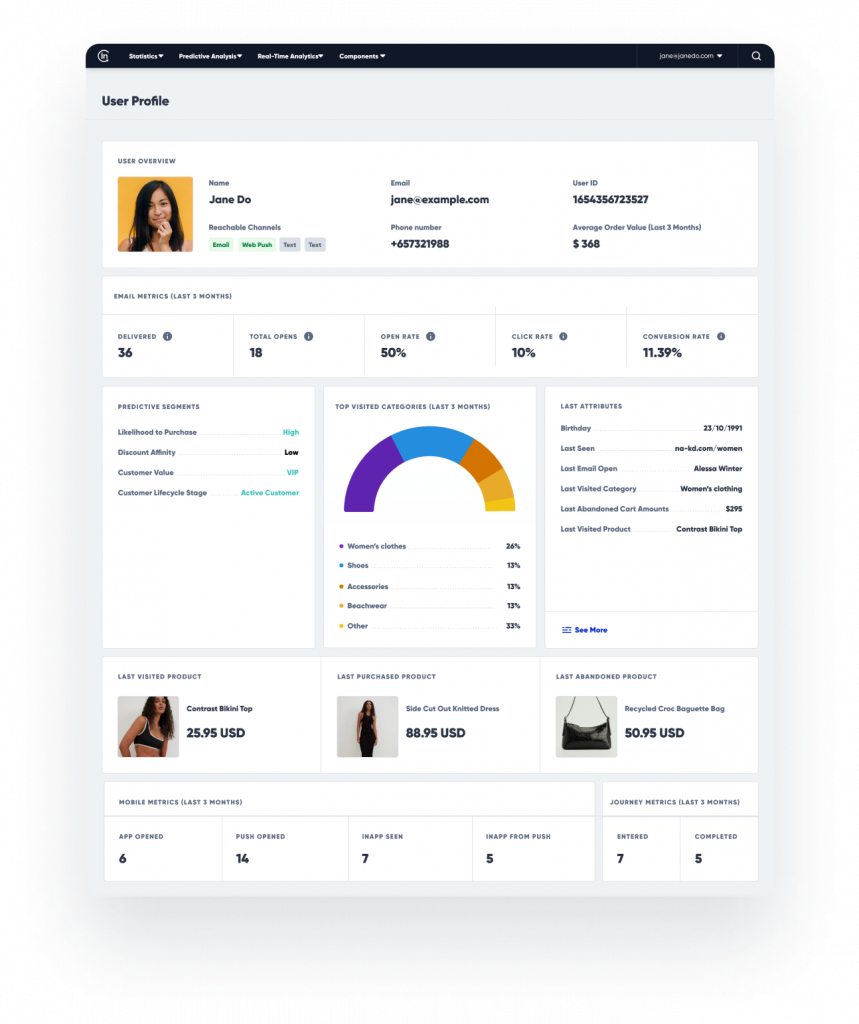
This data is essential for delivering relevant product recommendations, as it gives the engine the necessary information about each customer’s behaviors and preferences.
Insider even creates profiles for anonymous and first-time visitors. This enables our platform to understand their interests and personalize their experience in real time. It also lets you bring them back to the site using personalized web push notifications, which are highly effective and cost-efficient.
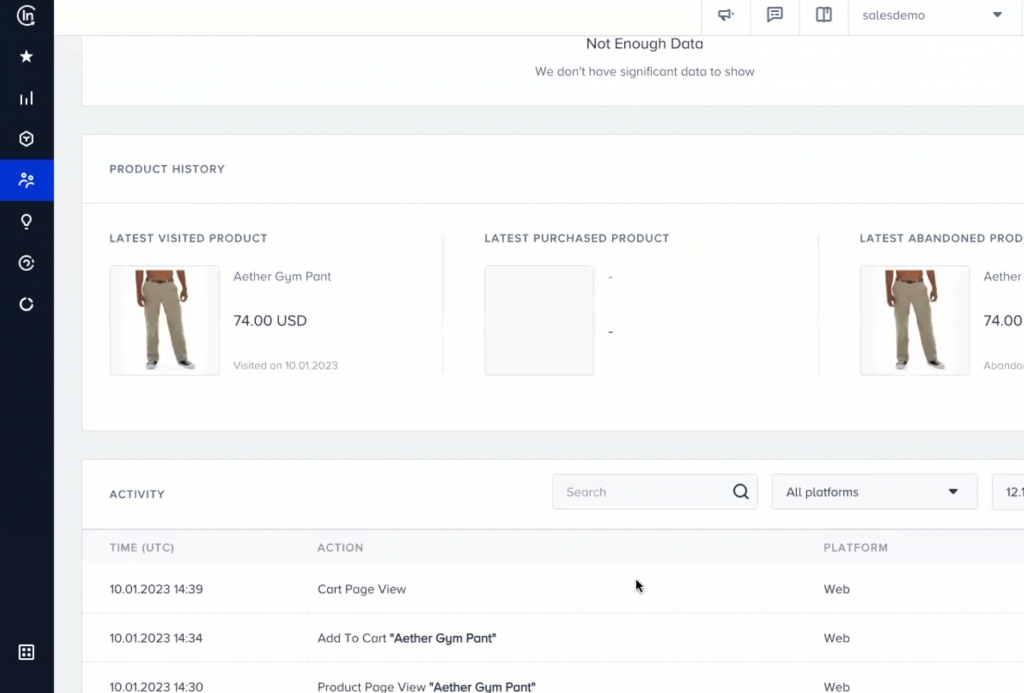
Lastly, Insider’s CDP is free when you’re using our platform. This means you don’t have to pay extra to unify your data when using Insider’s personalization, automation, and engagement features.
For more details on how Insider can help your business, book a live demo with our team.
Dynamic Yield
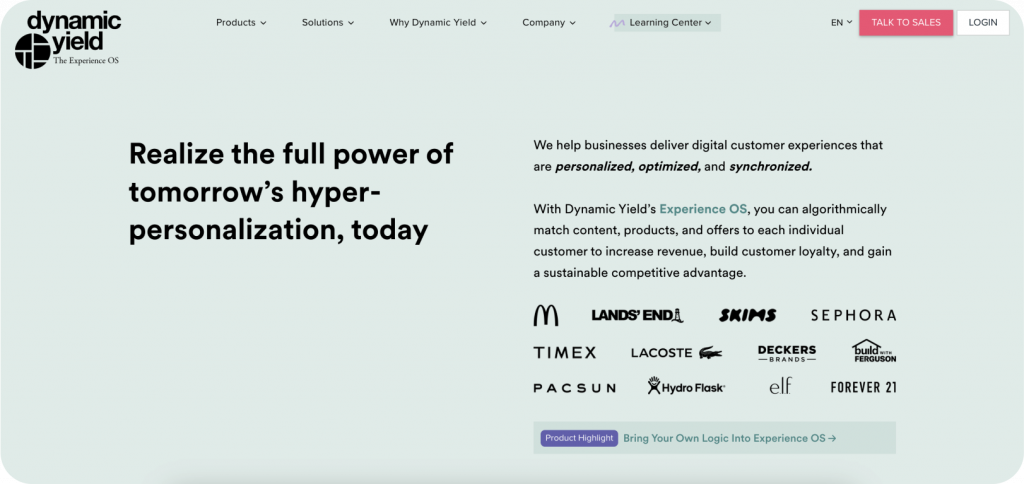
Dynamic Yield is an advanced personalization platform owned by Mastercard. It’s heavily focused on website personalization, AI-powered product recommendations, and A/B testing. While it’s a good option for delivering personalized product recommendations across your website, it doesn’t support any external channels besides email. This means you’ll need to integrate it with other point solutions if you want to deliver personalized product recommendations on channels like push notifications, SMS, or WhatsApp.
Emarsys
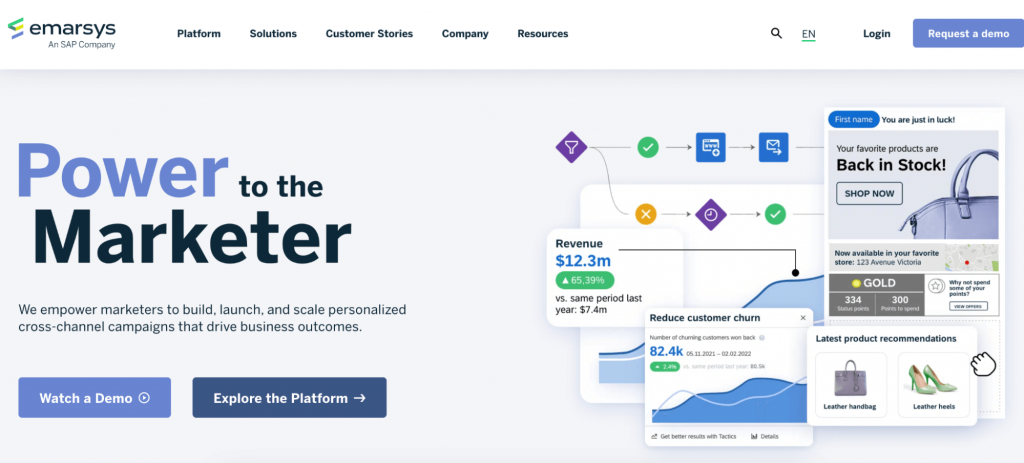
Emarsys is an omnichannel customer engagement platform owned by SAP. It’s powered by a personalization engine that can deliver contextual product recommendations across websites, mobile apps, email, SMS, and digital ads. Overall, Emarsys is a better choice for omnichannel marketing use cases than Dynamic Yield but it doesn’t support the same variety of channels and doesn’t offer as smooth of an implementation as Insider.
Learn more: A detailed review of the 9 best Emarsys competitors and alternatives.
Deliver personalized product recommendations across all touchpoints with Insider
Insider is a perfect product recommendation engine for mid-sized and enterprise companies looking to deliver highly personalized recommendations to customers across all channels.
Our solution’s advanced personalization capabilities can help you drastically improve key metrics like acquisition costs, revenue, AOV, and retention. Plus, as a versatile enterprise marketing platform, Insider enables you to:
- Aggregate your customer data — from CRMs, CMSs, analytics tools, or any other online or offline sources — into one place. Our solution has been ranked as the best customer data platform (CDP) by G2 users and the leader in categories like ease of use, ease of setup, and quality of support.
- Track customers’ behaviors and uncover their interests and preferred touchpoints. Once set up, Insider tracks everything users do across channels like your website, mobile app, email, SMS, WhatsApp, and more.
- Use our AI-powered segmentation to target the right audiences and predict future behaviors. For example, Insider lets you target customers based on their likelihood to purchase or churn, discount affinity, predicted spending, and much more.
- Create personalized experiences across the entire customer journey — from your website and mobile app to channels like email, SMS, WhatsApp, Facebook Messenger, and more.
Finally, our versatile setup options, experienced support team, and vast template library enable you to get started and see a meaningful return on your investment as quickly as possible.
Click here to book a demo with our team and learn how Insider can help you reach your business goals.



















